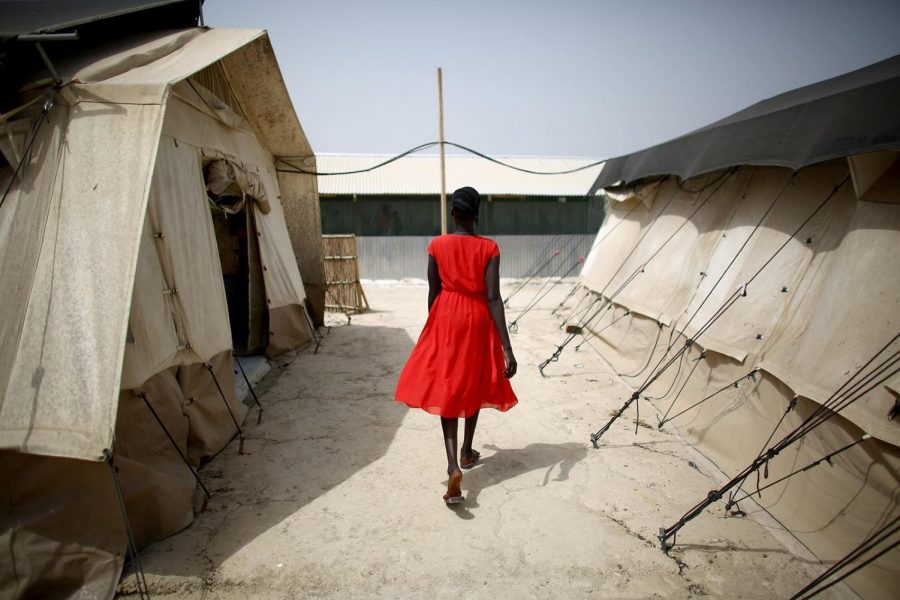OSU honors alumnus photojournalist killed in war zone
April 15, 2019
An exhibition of National Public Radio photojournalist David Gilkey’s work, entitled ‘Reporters Without Borders and Pictures on the Radio present: A Tribute To David Gilkey’, will be on display at Fairbanks Gallery from April 29 to May 23.
In 2016, Gilkey was covering the war in Afghanistan and he was killed by the Taliban, along with NPR interpreter and journalist Zabihullah Tamanna.
Gilkey, a Portland native and an alumnus of Oregon State University, studied photojournalism at OSU and originally got his start taking photos with The Daily Barometer and the OSU yearbook. He went on to work for NPR shooting conflict photography, covering the wars in Afghanistan and Iraq, and other disasters like the 2010 earthquake in Haiti and the Ebola outbreak in Liberia.
Larry Landis, the director of the Special Collections and Archives Research Center, did not know Gilkey personally but knew his father, Richard Gilkey, who was also a photographer and OSU alumnus.
Over the years, Landis and Richard corresponded, emailing or interacting at various university events. Richard would occasionally speak of his son, David, and the work he was doing as a photojournalist. When Landis published a pictorial history of OSU in 2015, Richard reached out to him, and also told him that David enjoyed the book.
“He would just update me on what David was doing. This was 2015, and six or seven months later, David was killed in Afghanistan,” Landis said. “That just hit me really hard, even though I never met him.”
Landis was listening to NPR the night he heard the news of David’s death. He was tuning in to a Sunday night jazz show, which was followed by a short news broadcast, where David’s death was announced.
“I was floored,” Landis said. “The jazz show had been particularly good that night, and it was a beautiful evening — it was early June, a perfect spring, Sunday evening — and then to have that announcement hit you, given the connection to OSU, the fact that I knew his parents. I had just mentioned David in the pictorial history that was published before he passed away. So a lot of that was still fresh on my mind.”
Since the news of Gilkey’s death in 2016, Landis has hoped to see an exhibit of this sort to showcase David’s work, and is glad to see it finally coming to fruition.
Landis described Gilkey as a risk-taker, an individual who welcomed challenges and was extremely passionate about photography and sharing the stories of individuals across the globe.
“Given the type of work he was doing in these war zones and in the areas that had been devastated by natural disasters — he was bringing that back to us, us being everybody in the United States, to give us that bit of experience of what was going on in those areas, and the impact that comes from that,” Landis said.
Lee Ann Garrison, the director of the School of Arts and Communication, also emphasized the impact of the images Gilkey captured in these war and disaster-stricken areas.
“[The photos] really touch you. He really gets that human side of the stories,” Garrison said. “I think, especially on radio, you’re not getting all the visual images, so to have this where you can follow up online and continue the story and see the people — there’s something about looking right at someone, or right at the situation, that evokes our human empathy for the story that’s being told.”
Garrison said talks about the possibility of an exhibit in Gilkey’s honor has been ongoing since 2016, and said it has been a group effort across the university to finally bring it to Fairbanks Gallery.
Although Gilkey primarily shot conflict photos for journalism, Garrison said he had the skills and aesthetic of a fine art photographer.
“I think he had an excellent artistic eye, and that was really part of his success,” Garrison said. “His willingness to go in and put himself at risk to find that moment where a photograph tells a story — I think that is the mark of a truly talented photographer.”
The upcoming show at Fairbanks Hall will include 17 of Gilkey’s photographs from his time shooting conflict photography with NPR.
“I got to see the photographs as they were being unpacked. It’s going to be a fabulous show. David Gilkey was the real deal,” Erin O’Shea Sneller, the marketing and communications manager for the School of Arts and Communication said via email. “He went everywhere. He was definitely one of the greatest conflict photographers of our lifetime.”
In addition to the exhibit, a reception will be held on May 2 in Fairbanks Gallery from 4:30 p.m. to 6 p.m., and a public panel discussion will take place on the same day from 7 p.m. to 8 p.m. A number of Gilkey’s fellow NPR journalists will be in attendance, including David Greene, the host of NPR’s Morning Edition, reporter Anni Katz and NPR sports correspondent Tom Goldman.
“David was there at work in these places around the world, and what he captured was real,” Sneller said via email. “He was brave and talented, and his death was such a tragedy, but I like to believe he chose his field knowingly and loved what he did. I hope everyone will come to campus and see his work.”
Fairbanks Gallery is open Monday through Friday from 8 a.m. to 5 p.m. Admission is free.
























































































































